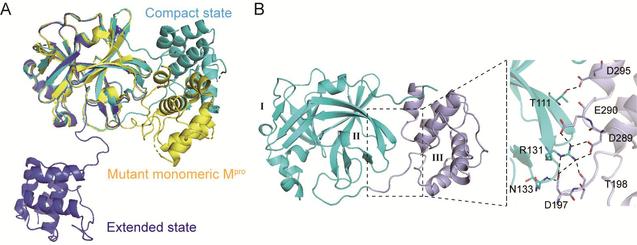The research group led by Xu Jianfeng from the College of Food Science and Technology of SHOU identified nanobodies having high affinity with the receptor binding domain on the SARS-CoV-2 S-protein in immune camels using the phage display technology and recombinant proteins. The performance of multiple nanobodies and antigen-binding epitopes was investigated using the biofilm layer interference technology, and the activity of nanobodies was detected using pseudovirus cell experiments. The crystal structure of the ternary complex of RBD and a bispecific nanobody was analyzed using structural biology techniques such as X-ray diffraction and cryo-electron microscopy (cryo-EM). Antibody binding sites were analyzed using the Octet biomacromolecular interaction analysis system. The paper titled “Structure basis of two nanobodies neutralizing SARS-CoV-2 Omicron variant by targeting ultra-conservative epitopes” has recently been published online in the internationally renowned Journal of Structural Biology. Graduate student Sun Zengchao is the first author of this paper, and Xu Jianfeng, a member of the Special Committee on Nanobody Quality of the China Quality Association for Pharmaceuticals (CQAP) and a China Medical Quality Management Association and a professor appointed by SHOU, is a co-corresponding author. The previous research results of the research group have been published in mainstream international journals such as PNAS Proceedings of the National Academy of Sciences of the USA, Cell Structure, and Protein Expression and Purification. This study has received technical support from researcher Geng Yong from the Shanghai Institute of Materia Medica, Chinese Academy of Sciences (CAS), researcher Gong Rui from the Wuhan Institute of Virology, CAS, and Professor Dai Yuanyuan from Peking Union Medical College. It has also been subsidized by the First-class Discipline of Shanghai Municipality in Food Science; the Shanghai Institute of Materia Medica, Chinese Academy of Sciences (CAS); the Dongjiang Talent Program of Jiangsu Province, and the Innovation Team Project of Ji’nan Municipality.
Coronaviruses all have spike proteins (S-proteins), which determine the recognition between viruses and host cells. The SARS-CoV-2 S-protein enters a respiratory epithelial cell by interacting with the cell surface receptor angiotensin-converting enzyme 2 (ACE2). Understanding the fusion between the SARS-CoV-2 S-protein and the host cell membrane, as well as the changes in conformational states before and after fusion, is conducive to blocking the conformational states at various stages, thereby achieving neutralization. The coronavirus S-protein is cleaved by the host’s protease into the S1 substructure domain at the N-terminus and the S2 substructure unit binding to the membrane at the C-terminus. The S1/S2 isomers are assembled into a trimer, which protrudes on the virus shell to form a spike. In the S2 substructure unit, there is a hydrophobic fusion peptide. After binding to the receptor during infection, great changes occur in the conformation. The S-protein then experiences a transition from a metastable pre-fusion state to a post-fusion state, followed by fusion with the host cell membrane.

This study elucidates the mechanism of multivalent nanobodies neutralizing SARS-CoV-2. On the basis of structural biology, a new bispecific multivalent nanobody is designed. For SARS-CoV-2 variant RBD, it still possesses effective ACE2 receptor competitiveness and ultra-high affinity. This will significantly promote prevention and control as well as detection of coronaviruses, providing a new idea for the development of bispecific nanobody drugs against coronaviruses.